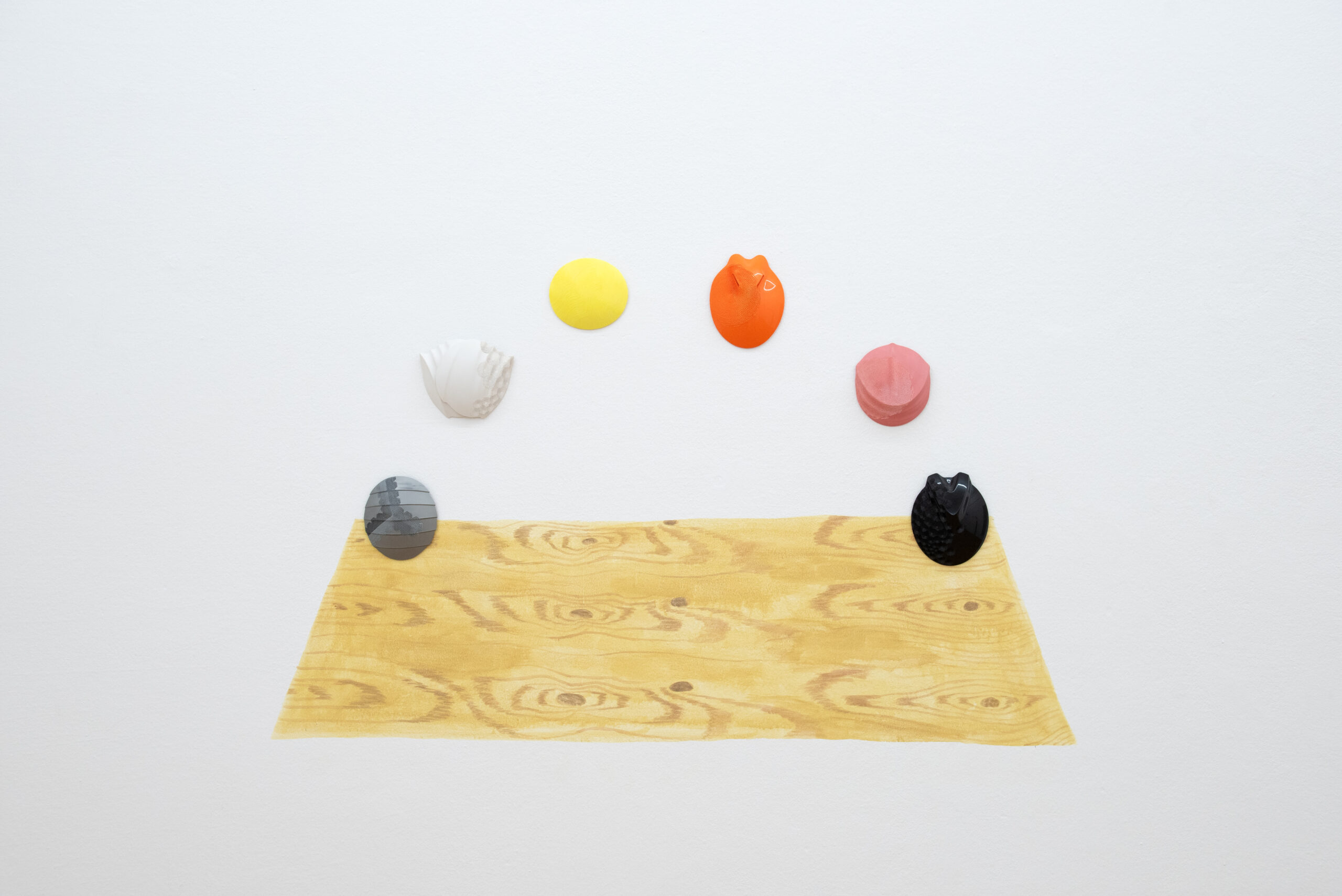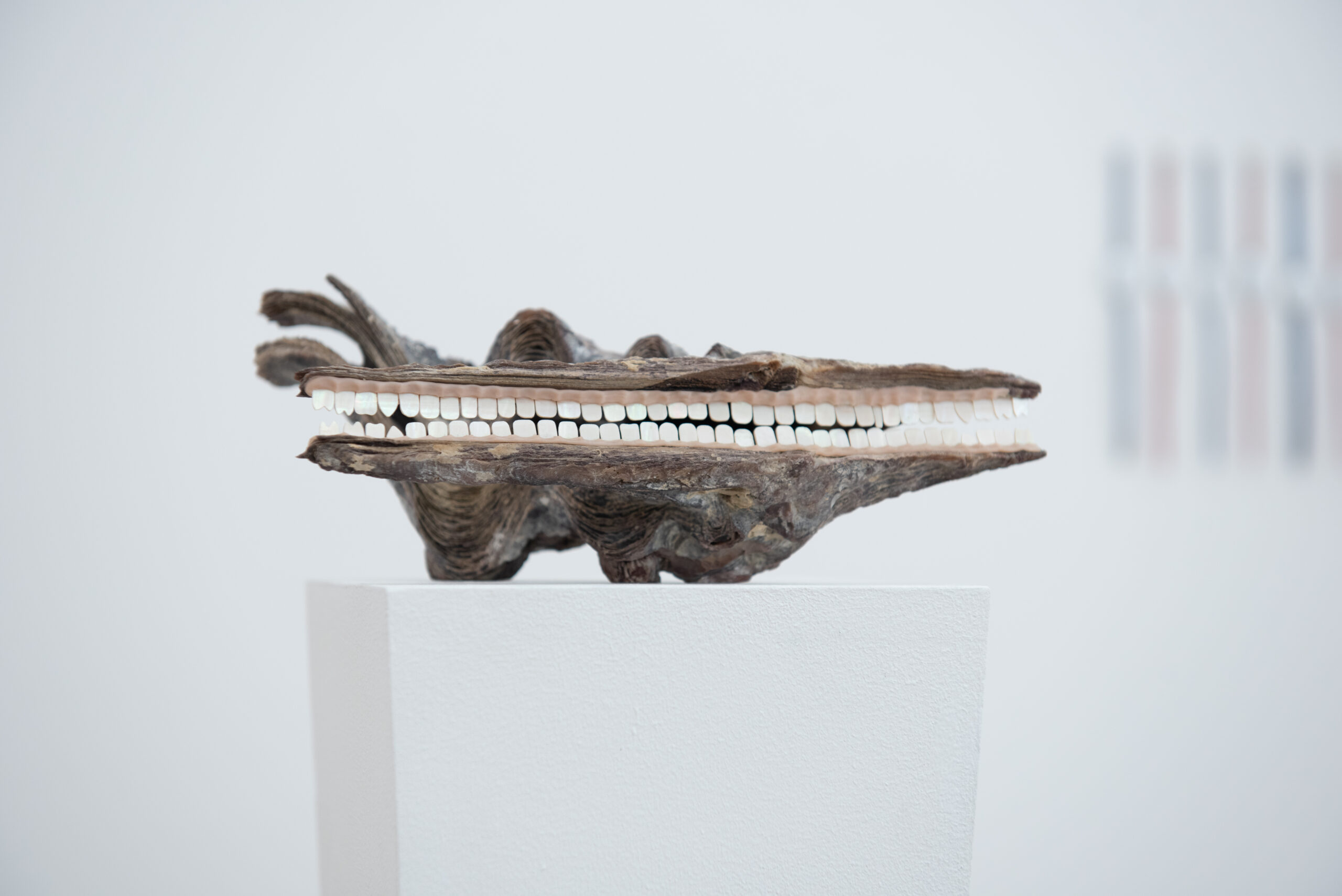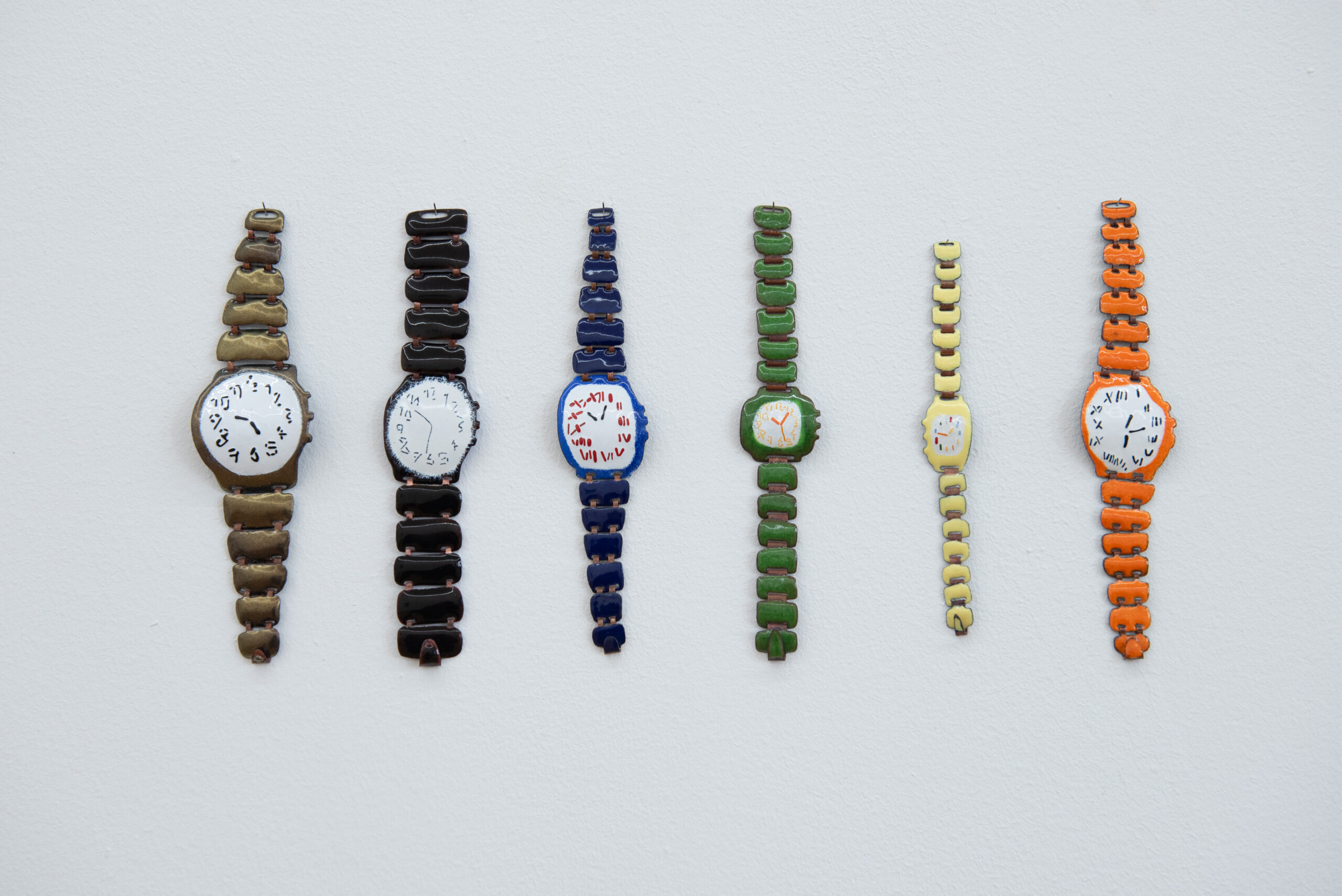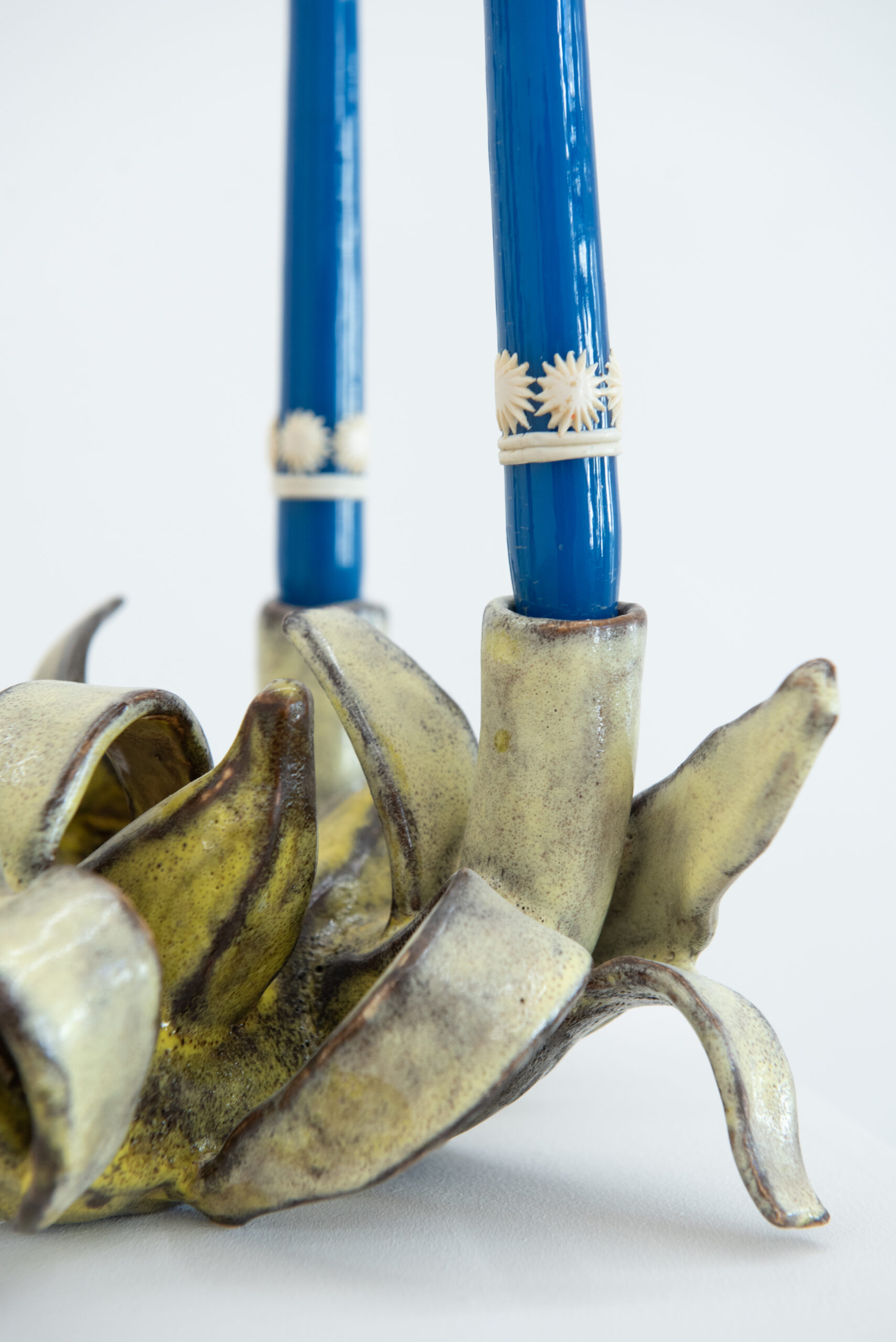

























The Plot ThickensBenedikt Fischer: Schmuck - die Essenz des Menschlichen
Es ist eine Herausforderung Worte für ein Werk zu finden, welches aus sich heraus eine so klare und direkte Sprache spricht, dass jedes zugefügte Wort eigentlich hinfällig ist.
Die Ausstellung von Benedikt Fischer führt uns in eine Welt, in der viel Schmuck ist — Schmuck als Ausdruck unserer Instinkte und Geschichten.
Benedikt Fischer verbindet zeitgemäße Ansätze mit den archaischen Wurzeln des Schmucks, welcher meist aus tierischem Material wie Muscheln und Knochen entstand. Schon früh trug der Mensch Schmuck nicht nur zur Zierde, sondern auch als Schutz — geistig wie körperlich. Diese ursprüngliche Funktion übersetzt Fischer in die Gegenwart.
Die Liebe für das Handwerk, die hat er mitgebracht, aus Österreich, vom Land, wo er aufgewachsen ist. Ein goldner Schutzengel an einer goldenen Kette war sein erstes Schmuckstück — ein Sinnbild für Schutz und Ritual, das den Künstler bis heute inspiriert.
Für ein Landkind wie ihn war die Kirche – natürlich der Ort mit seinen ,Schwätzen’, nicht die Institution – das, was einer Ausstellung am nächsten kam. ,Kunst oder so etwas wie Kunst gab es auf dem Land sonst einfach nicht.’ sagte er mir.
Die Herstellung seiner Werke, oft in einem entschleunigten Prozess, ist ihm existenziell.
Dieser Prozess, der sich zu 100% den gängigen Werten unseres Kapitalistischen Gegenwart entgegenstellt, ebenso wie die Zusammenarbeit mit Philosoph und Maler Rudy de Gruyl, der zudem in der Outsider Art Galerie in Amsterdam arbeitet – eine Essenz des Menschlichen.
Zugewandt, einfühlsam, konzentriert
So habe ich Benedikt Fischer kennengelernt, damals als Student an der Gerrit Rietveld Akademie. Und so erlebe ich ihn immer noch.
Er zeigt, dass Schmuck weit mehr is als ein Object: ein verbindendes Element, das Gemeinschaft schafft, Geschichten teilt und die menschliche Existenz in all ihren Facetten feiert.
Text von Prof. Suska Mackert
Benedikt Fischer: Jewellery – Essentially Human
Finding words for work that speaks such a clear, direct language on its own, where every added word is actually superfluous, is quite the challenge.
Benedikt Fischer’s exhibition takes us into a world where there is a lot of jewellery – jewellery as an expression of our instincts and stories.
Benedikt Fischer combines contemporary approaches with the archaic roots of jewellery, usually made from animal materials such as shells and bones. People have been wearing jewellery since early times not only for adornment, but also for protection, both spiritual and physical. Fischer translates this original function into the present.
He brought his love for craft with him from the Austrian countryside, where he grew up. His first piece of jewellery was a gold guardian angel on a gold chain, a symbol of protection and ritual that continues to inspire the artist to this day.
For a country boy like him, the church – the place with its “treasures” of course, not the institution – was the closest thing to an exhibition. “Art or something like art simply didn’t exist in the countryside,” so he told me.
The production of his works, often a slow-paced process, is existential to him.
This process, 100% opposed to the current values of our capitalist present, just like his collaboration with the philosopher and painter Rudy de Gruyl, who also works at the Outsider Art Galerie in Amsterdam, is essentially human.
Attentive, empathetic, focussed
That’s how I got to know Benedikt Fischer, back then as a student at the Gerrit Rietveld Academie. My experience of him is still the same.
He shows that jewellery is much more than an object: a connecting element that creates community, shares stories and celebrates human existence in all its facets.
Text by Prof. Suska Mackert, translation by Paul Adie
Installation views






Artist
Benedikt Fischer
Benedikt Fischer(*1984 in Fraham, Austria) lives and works in Amsterdam. After completing technical studies in Austria, he honed his craft at the Rietveld Academy in Amsterdam.
Benedikt’s diverse practice is defined by collaboration, as well as his exploration of different materials and approaches. His work has been showcased in exhibitions around the world and is part of prestigious collections, including the Stedelijk Museum in Amsterdam, the National Gallery of Victoria in Melbourne, the CODA Museum in Apeldoorn, an the MAK Museum for Applied Art in Vienna.
Over the years, Benedikt has received several notable accolades, including the Eligius Jewellery Award and the Mari Funaki Award for Contemporary Jewellery.